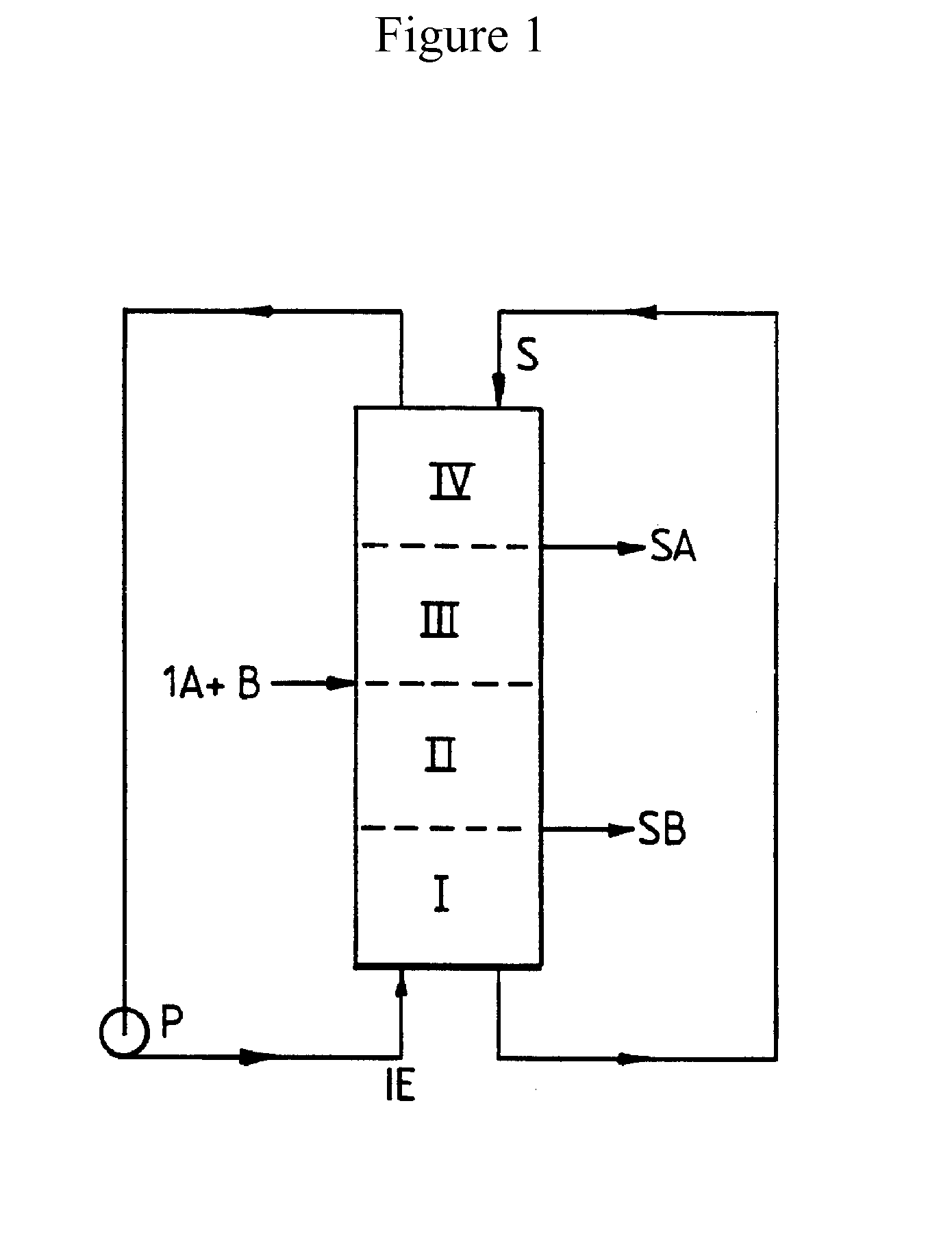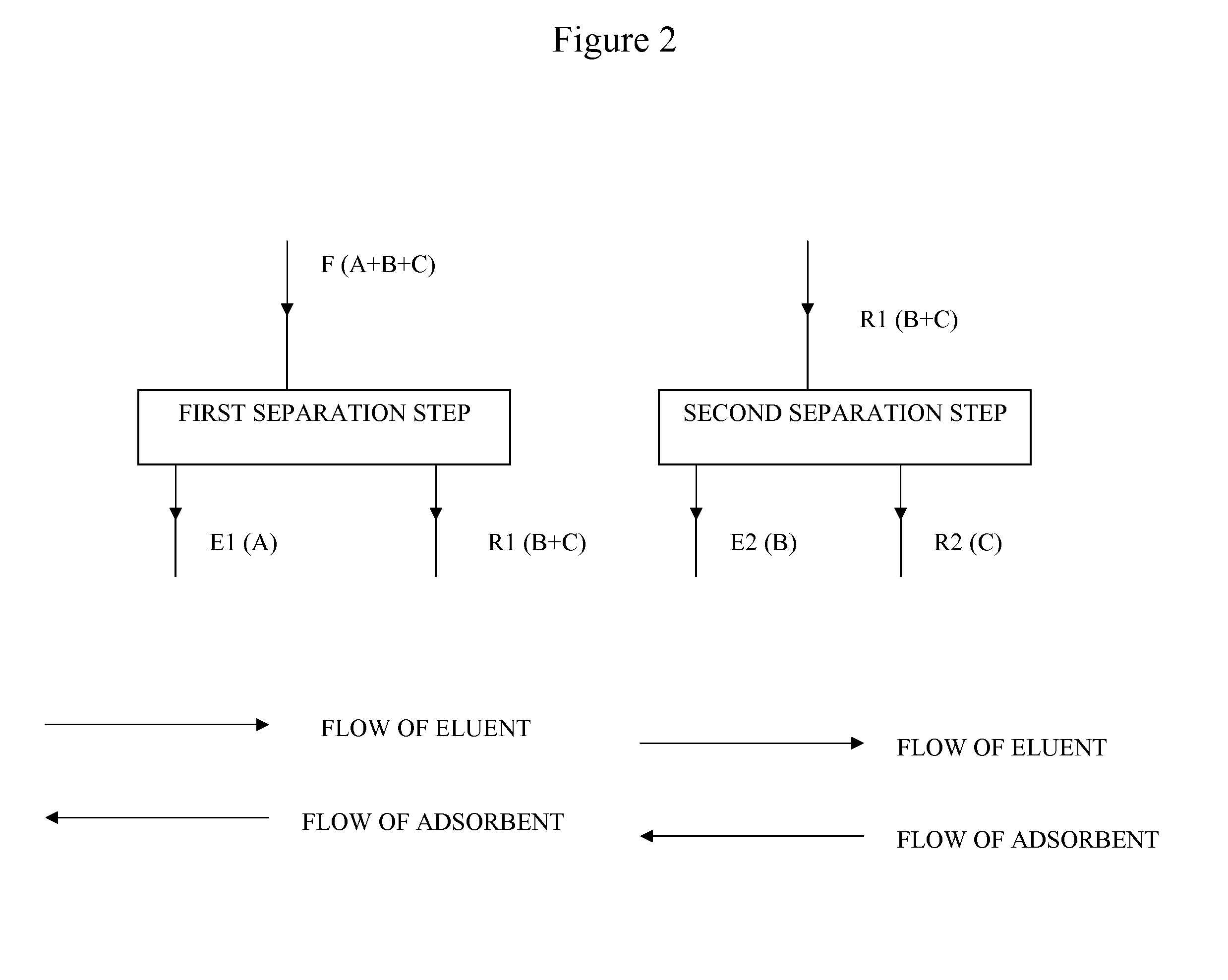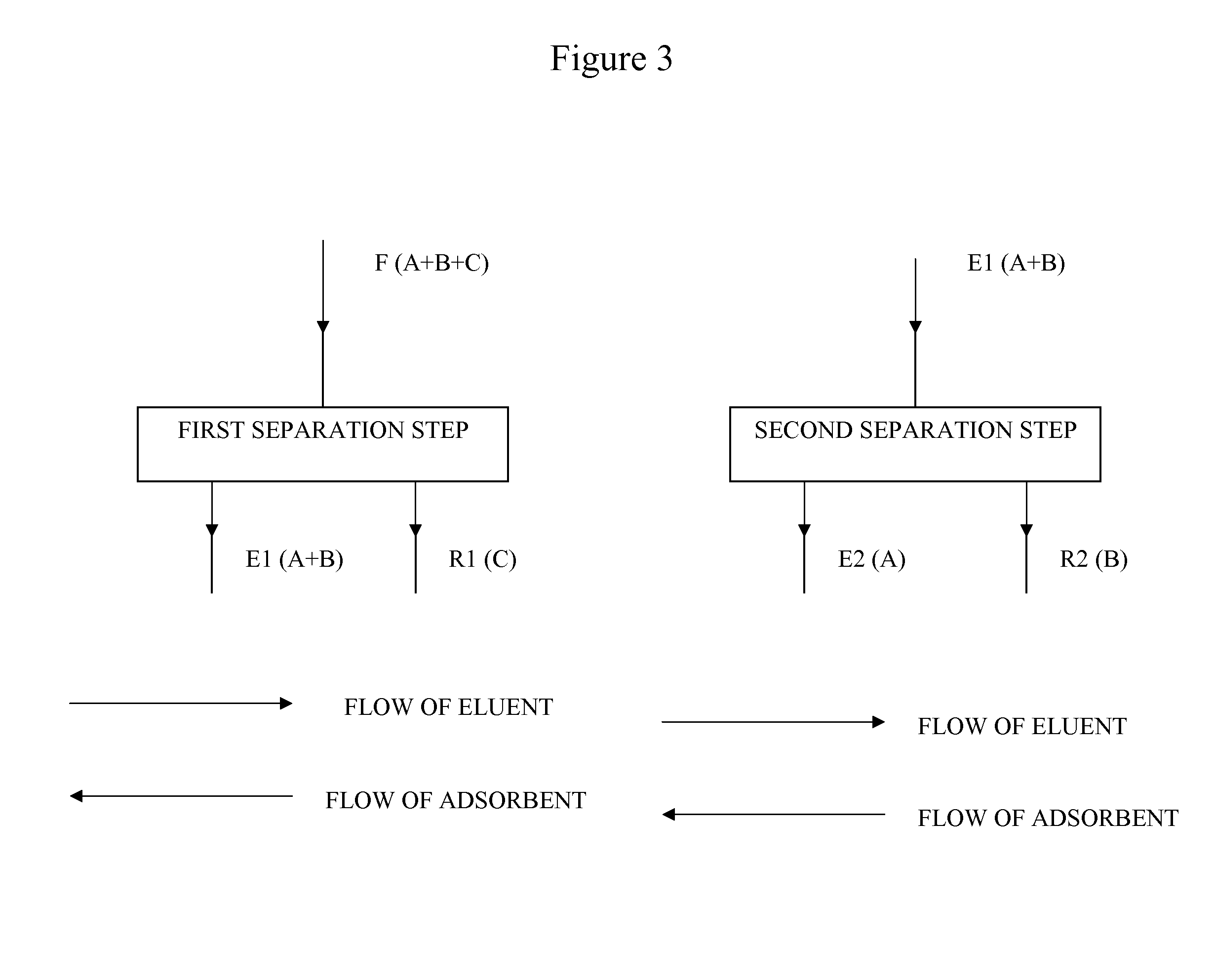New SMB Process
a chromatographic separation and process technology, applied in the direction of separation processes, fatty-oil/fat refining, instruments, etc., can solve the problems of difficult fractionation and purification of pufa products to prepare pure fatty acids, prone to isomerization, peroxidation and oligomerization, and extremely fragile pufas. , to achieve the effect of high yield and high purity
- Summary
- Abstract
- Description
- Claims
- Application Information
AI Technical Summary
Benefits of technology
Problems solved by technology
Method used
Image
Examples
example 1
[0205]A fish oil derived feedstock (55weight % EPA EE, 5 weight % DHA EE) is fractionated using an actual moving bed chromatography system using bonded C18 silica gel (particle size Sum) as stationary phase and aqueous methanol as eluent according to the system schematically illustrated in FIG. 9. 8 columns (diameter: 4.6mm, length 250mm) are connected in series as shown in FIG. 9.
[0206]The feed mixture was passed through the SMB apparatus in a first separation step. In the first separation step, process conditions were adjusted to purify EPA from DHA and other slow running impurities. EPA along with other fast running impurities was collected in the raffinate stream as the intermediate product. The extract stream containing DHA and other slow running impurities was rejected.
[0207]The process conditions of the SMB apparatus were then adjusted for the second separation step. In the second separation step, the process conditions were adjusted to purify EPA from the faster running impu...
reference example 1
[0213]An experiment was carried out to compare the amount of environmental pollutants present in two PUFA products produced by SMB with similar oils prepared by distillation. The pollutant profiles of the oils are shown in Table 1 below.
TABLE 1PUFA productPUFA productReleaseDistilledDistilledproduced byproduced byParameterSpecificationoil [1]oil [2]SMB [1]SMB [2]Polyaromatic Hydrocarbons(PAH) (μg / kg)Benzo(a)pyreneNMT 2.00.900.90ImpuritiesDioxins and Furans PCDDsNMT 2.00.460.370.20.184and PCDFs1)(pg WHO-PCDD / F-TEQ / g)PCBs (mg / kg)NMT 0.090.00370.01030.00070.0012Sum of Dioxins, FuransNMT 10.01.030.4660.300.298and Dioxin-like PCBs2)(pg WHO- PCDD / F-PCB-TEQ / g)1)Dioxin limits include the sum of polychlorinated dibenzeno-para-dioxins (PCDDs) and polychlorinated dibenzofurans (PCDFs) and expressed in World Health Organisation (WHO) toxic equivalents using WHO-toxic equivalent factors (TEFs). This means that analytical results relating to 17 individual dioxin congeners of toxicological concern...
reference example 2
[0214]An experiment was carried out to determine the amount of isomeric impurities present in an oil prepared by SMB compared with an equivalent oil prepared by distillation.
[0215]A GC trace of the DHA-rich oil prepared by SMB is shown as FIG. 15. There is no evidence of isomeric impurities in the GC trace.
[0216]A GC trace of the oil prepared by distillation is shown as FIG. 16. The four peaks with longer elution times than the DHA peak correspond to DHA isomers. From the GC trace it can be seen that the oil prepared by distillation contains about 1.5 wt % of isomeric impurities.
PUM
| Property | Measurement | Unit |
|---|---|---|
| diameter | aaaaa | aaaaa |
| diameter | aaaaa | aaaaa |
| diameter | aaaaa | aaaaa |
Abstract
Description
Claims
Application Information
 Login to View More
Login to View More - R&D
- Intellectual Property
- Life Sciences
- Materials
- Tech Scout
- Unparalleled Data Quality
- Higher Quality Content
- 60% Fewer Hallucinations
Browse by: Latest US Patents, China's latest patents, Technical Efficacy Thesaurus, Application Domain, Technology Topic, Popular Technical Reports.
© 2025 PatSnap. All rights reserved.Legal|Privacy policy|Modern Slavery Act Transparency Statement|Sitemap|About US| Contact US: help@patsnap.com



